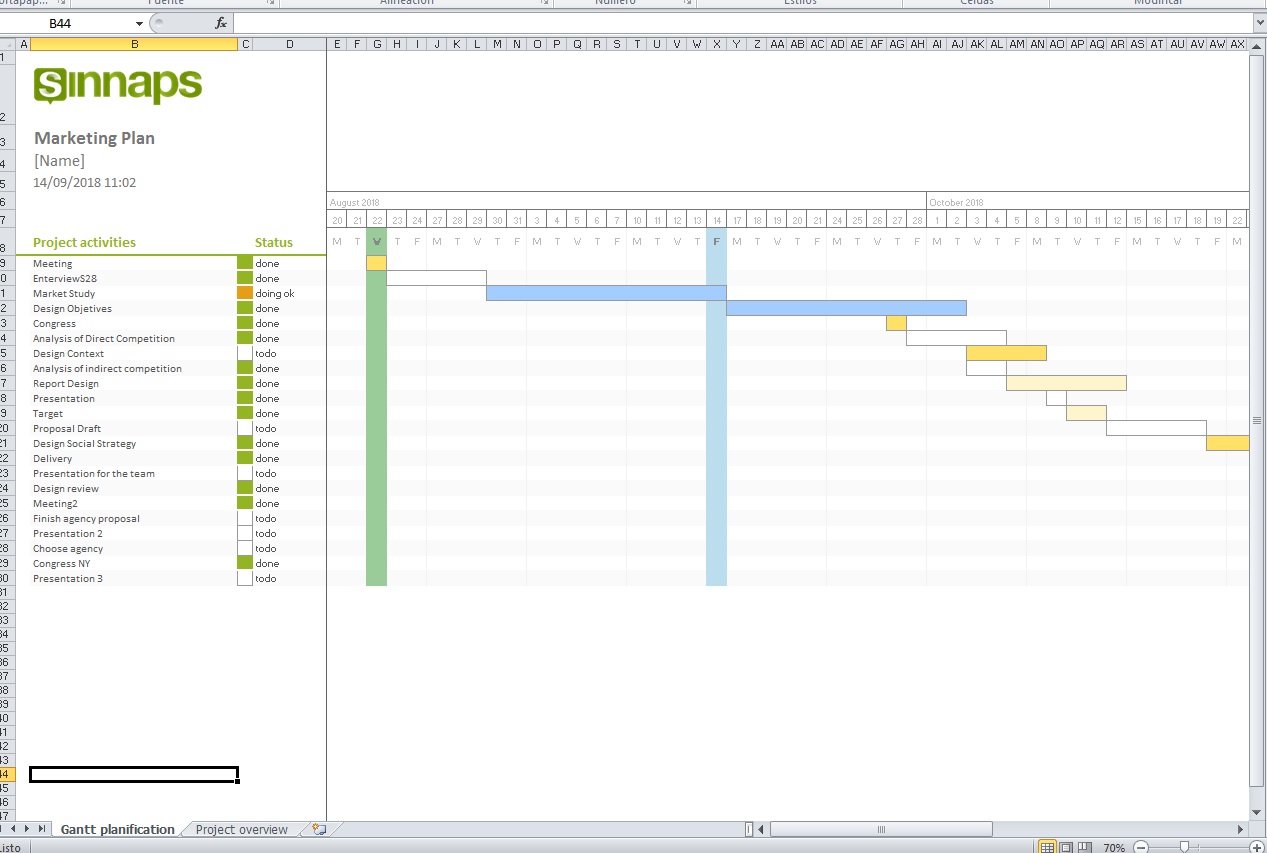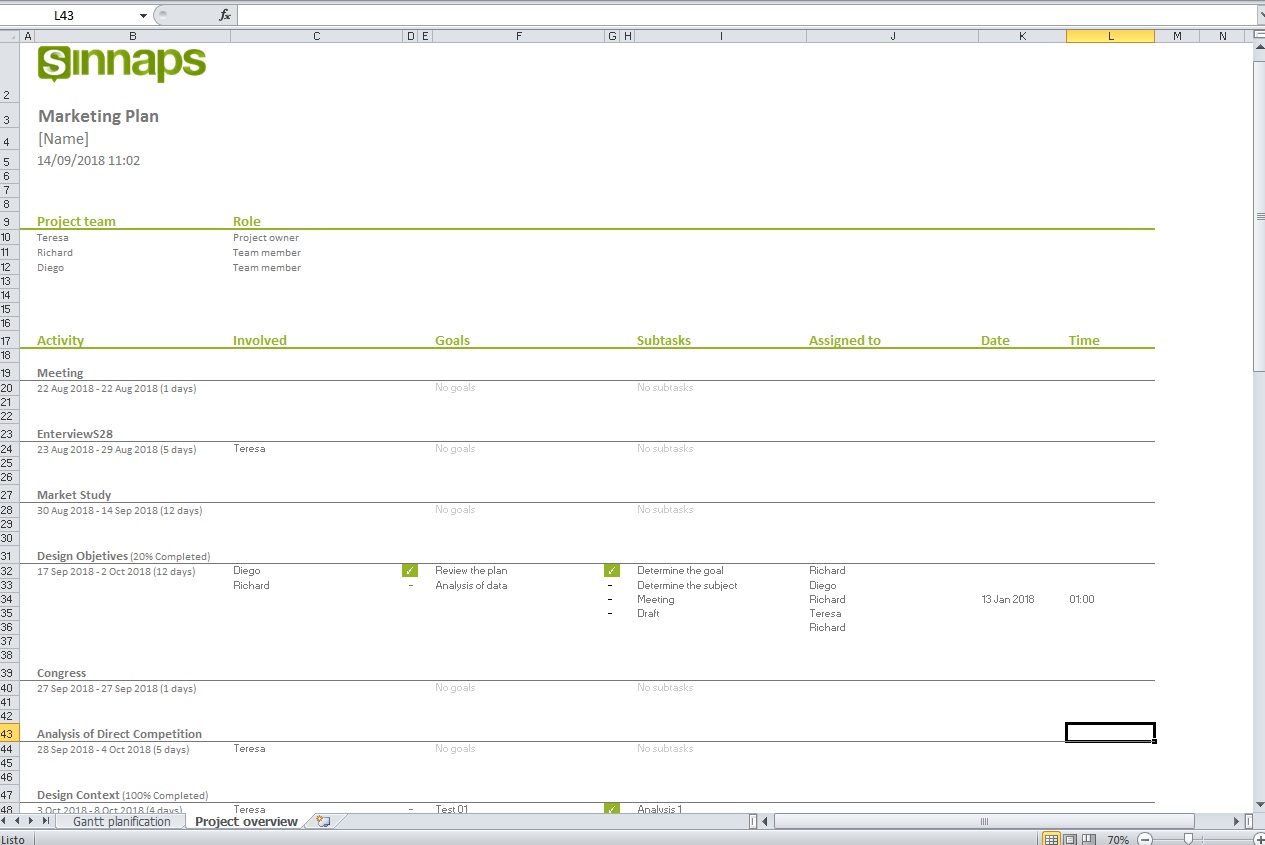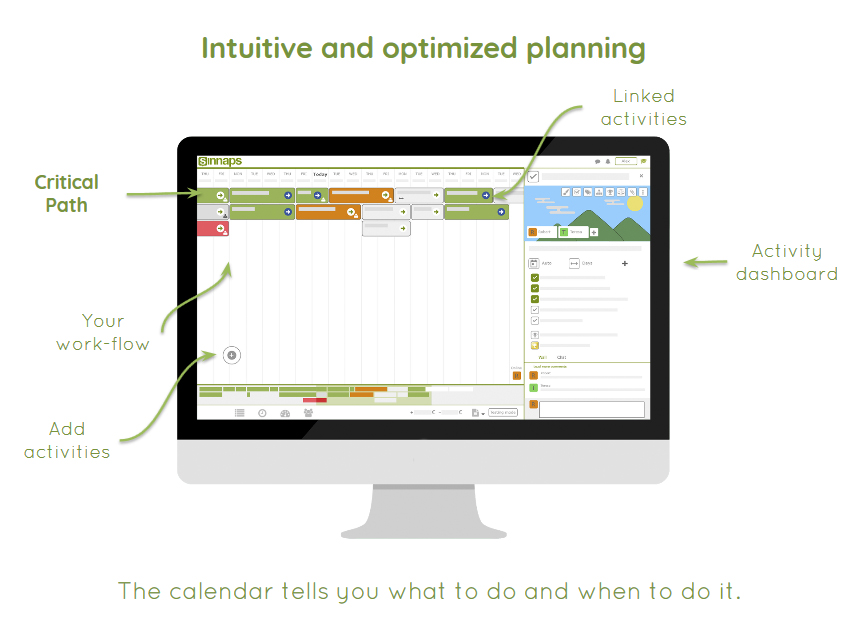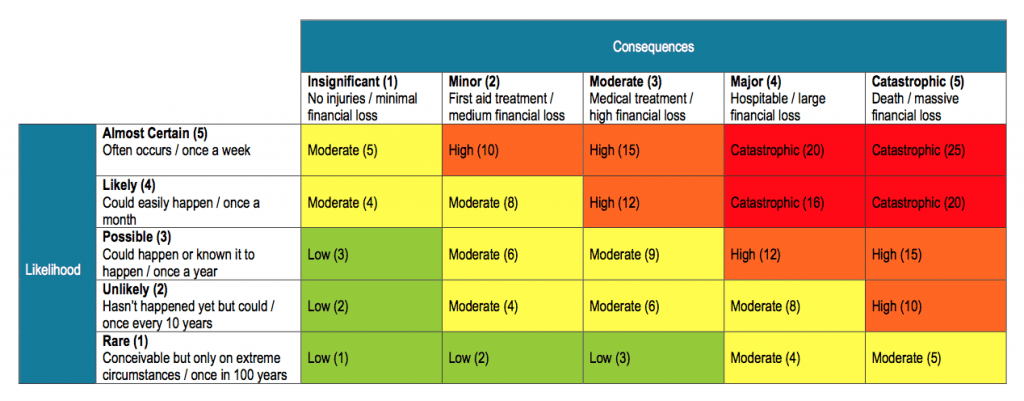‘Fail to prepare, prepare to fail’. This is an age-old proverb that captures the essence of project risk analysis. Effective project risk analysis allows you to understand and determine the potential risks and problems that your project may face throughout its life-cycle. This allows you and your project team to effectively prepare for the challenges that may lie head.

In this article, will take a look at how to use a risk analysis template excel, a project risk analysis example and how risk can be analysed with Sinnaps project management software and some of the most important risk analysis methods and models.
Índice
How to Use a Risk Analysis Template Excel
Risk is comprised of two parts. The first is the probability or likelihood that something will go wrong and the second the consequences of something going wrong. There are specific risk analysis process steps to be undertaken as identifying risk can be complex.
It is worth the time and effort however. If you are hit with a consequence from a planned risk, it won’t be as difficult to overcome as when you are hit by a consequence from an unplanned risk.
One of the risk analysis tools is a risk analysis template excel. As you can see in this report, your project status is defined in real time. This allows you to see and appraise project performance as well as to compare it against planned performance. This risk analysis template excel is available from the Sinnaps project management community. This is how to use it:
- Choose a template that you like.
- Modify and fill in the parts that are specific to your project.
- Attach the template to your project plan or export it to excel format.
- Save valuable amounts of time and effort.
Project Plan Template Excel


Tips to Consider when Carrying out Risk Benefit Analysis
The following are some important tips to remember when carrying out risk benefit analysis:
- Carry out the risk return analysis at the start of a project when different options are being analysed and compared in order to choose the best approach.
- Remember that a monetary value can be placed on all the costs and benefits of a project, including tangible and intangible.
- Any cost risk analysis report example will show the in-depth appraisal of the various factors. Explain to your team that the risk reward analysis will help to explicitly and systematically consider the various factors which will influence strategic choice.
- Begin with an exhaustive list of all the different costs and benefits that could occur.
- Adopt a wide perspective of costs and benefits, including longer-term and indirect effects, reflecting the interests of all stakeholders.
Related links…
Project Risk Analysis Example
Let’s take a look at a business risk analysis example to understand the process better. Using software such as Sinnaps that includes various risk analysis features can greatly help enhance any project, from it risk analysis to basic project risk analysis. The following are some of the features and examples of how to use them:
- Critical Path: Sinnaps incorporates the CPM method into its software so that you can clearly define task relationship and identify any bottlenecks in your project plan. If for example, there is a task upon which many others are dependent, the critical path will highlight this and allow project managers to identify it before it becomes an issue.

- Earned Value Management: Standardised objective parameters allow you to measure your project performance and progress. This feature is able to provide accurate forecasts of project performance problems before they arise, giving you time to identify and deal with them.
- Testmode: This risk reward analysis feature allows project managers to test changes to the project plan and to see their effects and consequences before fully committing to the change. For example, if a project manager wanted to add an activity to a project, they first could test its impact and from seeing that it would increase project duration by 2 days, they might decide to not go ahead with the change after all. This is all done without the project team being notified until the change is 100% approved by the project manager.
- Virtual Coach: Sinnaps Virtual Coach provides a personalised assessment of your project progress. A series of problems that may endanger your project are analysed and personalised advice is given on how to improve your managing skills as well as listing out best practises that you are successfully applying. On the app, you will see the virtual coach in traffic light format with problem, potential improvement and what you are doing well.
Related links…
What is the Risk Analysis Matrix?
The risk analysis matrix is also sometimes referred to as the probability and impact matrix. It is used during risk assessment when carrying out qualitative risk analysis. In terms of project risk impact analysis, the risk analysis matrix does the following:
- Raises awareness of risks.
- Increases the visibility of risks.
- Helps decisions on risks to be effectively made in context.
Risks are rated for their probability and impact on a scale in order to understand where on the risk matrix they fall. Risk factor analysis varies across industry, project, company and even the people involved. Some projects or companies by nature are more risk tolerant and others less. When considering how to do risk analysis, the risk analysis matrix is important to incorporate.

Important Risk Analysis Methods and Models
It is crucial to schedule risk analysis for all projects, especially those that are complex. There are a number of options when it comes to risk analysis methods and models, let’s take a look at some examples:
- Risk Factor Analysis (RFA): This method follows a qualitative approach. It serves as a comprehensive way to identify factors that can affect the quality of the outcome of a project. It is a flexible system that can be adapted to different scenarios with differing qualitative risks.
- Shape, Harness, And Manage Project Uncertainty (SHAMPU): This risk analysis method involves nine steps (define, focus, identify, structure, ownership, estimate, evaluate, plan, and manage) for risk assessment. This is a good starting point for those new to project planning and qualitative vs quantitative risk analysis.
- Risk Analysis and Management of Projects (RAMP): This method was developed in the UK. It helps to document and reduce the impact of risk. Analysis is scheduled throughout the life cycle of a project and places a strong focus on financial concerns. The stages of RAMP involve the identification of risks, analysis of the impact of those risks, their likelihood, a list of the options available for addressing those risks.
Having read this article, we hope that you have a clear understanding of the risk analysis framework and its benefits to project management. It may seem time-consuming, however when a problem or challenge does arise, you will be thankful that you carried out hazard and risk analysis for your project. Whether you are looking to carry out engineering risk analysis, marketing risk analysis or to simply draw up a project risk analysis chart, try doing it with Sinnaps project planning software today and let us know what you think in the comments below! 😊

